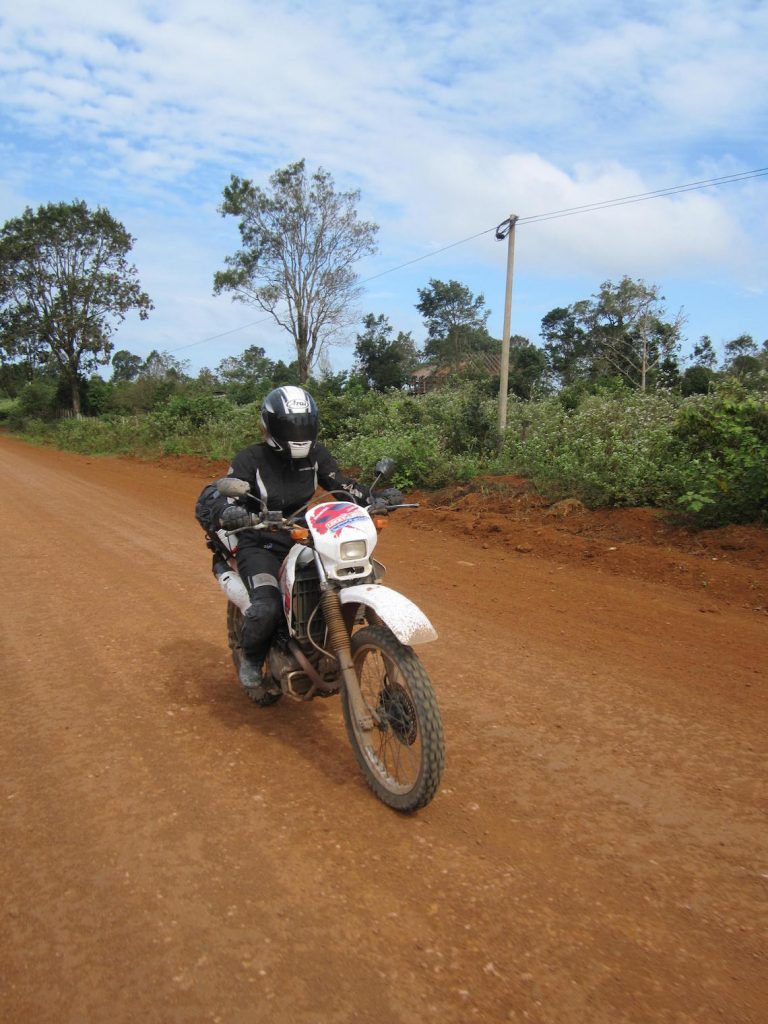POSTCARDS FROM CAMBODIA
The Steele family ride the Ho Chi Minh trail and glean some local wisdom…
Going to Cambodia is easier than it looks. Going it alone is even more fun; it adds to the sense of adventure and the unknown. It may seem like a long way from home when you look at the map, but wherever you want to go, from Madagascar to Himachal Pradesh, there’s always a local operator from whom you can hire a set of wheels. Forgo the expense of fancy Euro-booked packages and put your money straight into the local community; you’ll save two thirds on the overall cost by doing it independently and have a greater sense of satisfaction, too.
There’s no need to book ahead either. Get a map of the country, chart your outline route and hit the road. Remember the roads are not fast, but wherever you end up by day’s end, you will always be able to find someone with a small hotel or guest house ready to welcome you.
Where to ride
Cambodia is a perfect mix of ancient and modern. The legacy of the ancient Khmer Empire that dominated for more than 400 years from the 13th Century on is still evident, and contemporary Cambodia is rapidly catching up on its regional neighbours. Sen Monorom – Mondulkiri City – is cowboy country in Eastern Cambodia. It’s also connected to the country by the world’s newest and most empty highway – paved, too. Wide, fast and easy-to-travel curves that snake around the hills and provide those endless vistas of forest but also the new plantations of rubber, nut fruits, timber and more that represent the concession areas. This is a land without people, and the roadside services, settlements and snack-stops have yet to catch up with the rest of Cambodia. This is reasonably fast motorbike country. Make sure you travel with a full tank.
Cambodia also has the best dirt bike riding in the world; follow the low undulating hills along the Vietnamese border in Eastern Cambodia, explore the emptiness of the Cardamom Mountains of coastal Cambodia in to Thailand or loop through the north – crossing the Mekong at Stung Treng and pass the temple complex at the disputed border lands of Prasat Preah Vihear before returning to Siem Reap.
Take the Phnom Penh-Siem Reap-Battambang-Phnom Penh holiday routes – by boat or coach – and you’ll meet the service industries, production centres and factories of modern-day Cambodia. Ride a bike and escape to Eastern Cambodia, by comparison, and there are the remnants of the hill tribes, the rehabilitated forests, the wildlife that has returned – tigers, elephants, gaur, wild cattle, deer and pigs – and re-occupied lands that were bombed into oblivion by US forces during the war with the North Vietnamese; this is the Ho Chi Minh trail of fact and romantic legend.
And this is one of the reasons for riding Eastern Cambodia: a reasonable week away and 1,000 km of empty roads, trails, make-shift bridges and ferries. This is Mondulkiri and Ratanakiri Provinces in all their ‘wild-east’ settings; a vista of forests that stretch in all directions to the horizon, wide empty brown rivers with rock outcrops, isolated farms, footpaths and motorbike trails snaking into the bush; and the nothingness of endless forest land that appears primeval and the home of spirits and demons.
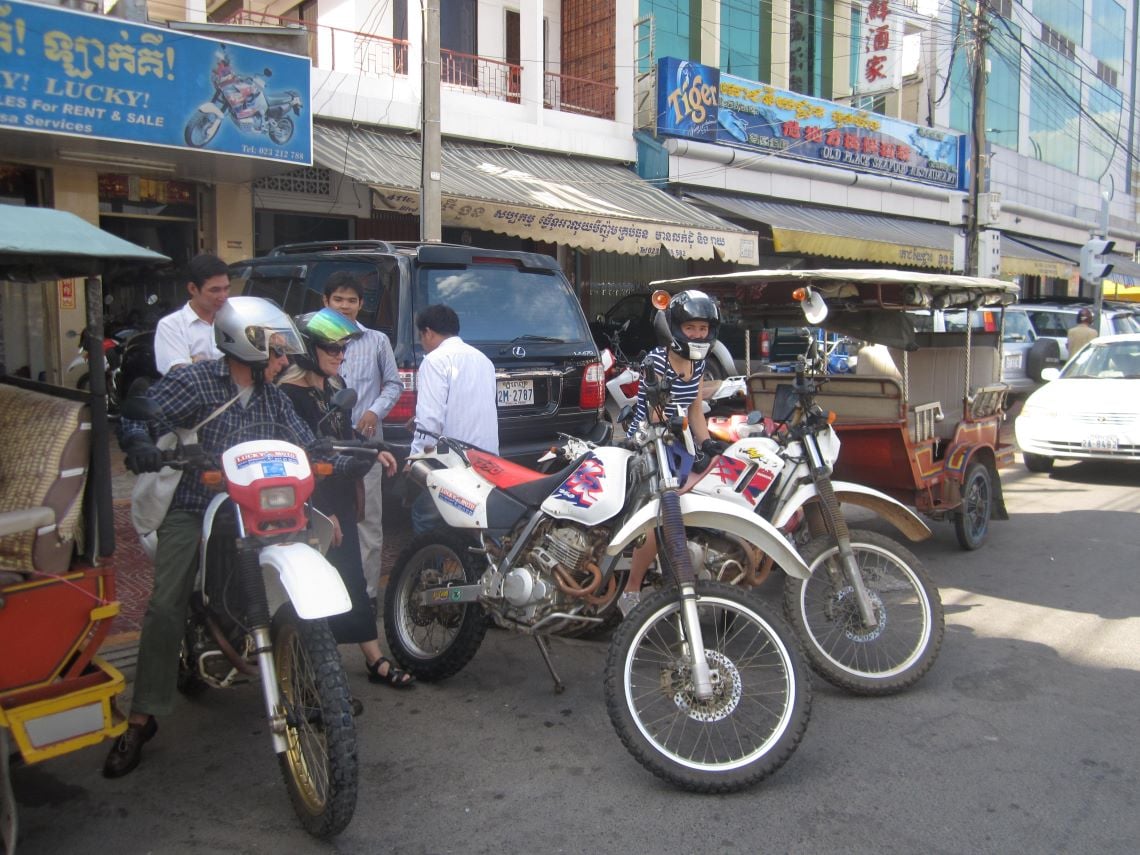
The Ho Chi Minh trail
During the time of the US/Vietnam war, the Ho Chi Minh trail stretched more than 1,000 km parallel to the Vietnam border in Laos and Cambodia. The network of trails, roads, pathways and rivers provided routes in support to the North Vietnamese and their National Front allies in their war of attrition with the South Vietnamese. The trail was not a single trail as such, but a complex network that stretched from the border to the Mekong River and, at its busiest during the mid-1960s, it was home to 24,000 men in six truck transport battalions, two bicycle battalions, eight engineering battalions and 45 logistical stations. All this has now gone.
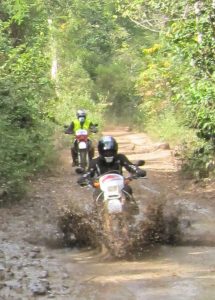
More ordnance was dropped along the trail by US bombers than during the whole of WWII in Europe, and the risk of travelling in the region – so everyone warns you – is straying in to remote places given the unexploded munitions that still litter the country. Much the same holds true for the left-over minefields of the Khmer Rouge civil war 30 years back. Tragically, people still continue to be killed and injured, but the reality of now is that more people are killed in traffic accidents from dangerous driving each year.
Guardian angel
The most serious bike hassles we had were hand levers as none of the bikes had hand guards fitted – can you imagine!? Fall over, even at slow speed and it’s the foot pegs, mirrors and hand levers that take the brunt of the bike hitting the ground. We had not thought to carry spare hand levers, and neither had the hire shop, but, if you’re travelling this way – take note! This was November-December – the dry period. The ground was rock hard; from March through to October the SW monsoon deluges forests, plantations and farms alike with almost four metres of rain. In this weather, experienced rider or not, these trails are off limits. Attempt them in the rain and there’s a good chance you’ll go on the missing list.
Take if from us – hiring a guide was the best $50 (£30) ever spent. We’d negotiated with the fixer in the bar down from $50 to $35 – still under the illusion that we did not really need a guide. We had not realised that the fixer was just that until the deal was done and he sent for a man on a small city bike, who was to be our guide. How much of the original sum he was due to receive remained open. We had no language in common. All we had to go on were smiles, half-a-dozen Khmer words for greetings, food and drink, sign language and trust. Our guide turned into that travelling angel that all ABRs need.
Jungle trails
The trails heading for the provincial town of Ban Lung started immediately, but as it was early afternoon and we were relatively fresh and keen, and with a guide to boot, we were optimistic of a five-to-six hour journey to the ferry at Lumphat, which became like the ‘Emerald City’, a place at the end of the rainbow… but this was before we began to fall off the bikes. Well, two of us did – Kristian with his larger bike and his riding experience tended to have more control and better balance – but he still fell off at times.
We hit long patches of sand – reminiscent of desert riding – where the bike’s front wheel bulldozed and we simply toppled over. Riding four bikes together (including the guide) there was always someone to help you up though. Other parts of the trail were ridged where road vehicles had pushed through near to Kon Nhek and areas that were farmed; woe betide you when the front wheel dropped in to a deep track and you were not fast enough to climb out. This would not have been the place to lose a clutch lever, but fortune smiled and we lost brake levers and mirrors instead.
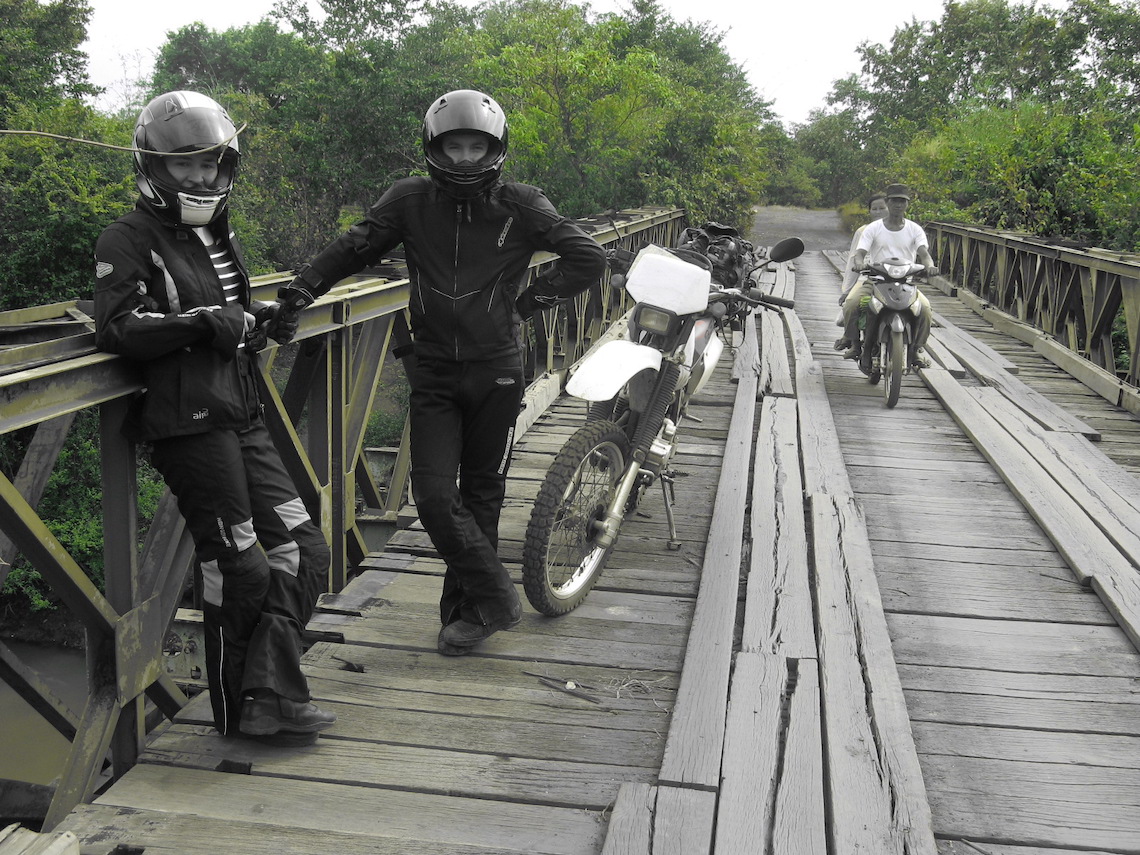
Falling off became more challenging as the evening set in as it got harder and harder to pick out the details of the trail. There were tree roots everywhere and it was an act of faith to ride a trail that was little more than two metres visible. Into the distance we could see the tail lights of the other bikes and the guide provided the encouragement that we all needed: “Only another 20k,” then “15k”and so on down to the last couple of kilometres. He would scratch the figures in the dirt of the trail, smile and use our common language: “Lumphat ferry’”
The forest was open and dry rather than tropical rain, and the trees and their shadows stretched in to the dark void of infinity. Break down now with a puncture or lost clutch and it would mean abandoning the bike and a returning tomorrow. Just after 10pm after more than 14 hours on the bikes the ferry master’s house loomed up in the dark among the trees and we could hear the river off to one side of us.
The options were easy; remain here overnight and take the ferry the next day or continue. Across the river were normal roadways, villages and, 25 km further on, the provincial capital of Ban Lung. For a couple of dollars, the ferry master provided a room in his house with sleeping mats, a blanket each and a new mosquito net that covered us all. He kindly shared his family’s meal of rice and fish with us as we sat on the floor around a couple of pressure lamps. It was all we could do to stagger from one lamp to the next. The following morning as the ferry phut-phuted in to the fast-moving water, we left behind a guide who had become a friend. Cambodia is a fast and rapidly changing place; catch it now while you can.
Who’s riding?
ANNA STEELE, 33 “I like visiting the west coast of Scotland and dislike grumpy people; I’d like to be still riding my bicycle when I’m 100.”
PETER STEELE, N/A “I’m older rather than younger in body (if not in mind) and chasing Ted Simon in years “A ride around Cambodia was too much of an opportunity to see those areas others rarely have the time to. Now I work in Rome and, in the summer, run my MGB to the office.”
KRISTIAN STEELE, 36 “Currently pondering how to persuade my boss to give me four months off work for the ride down to Cape Town!”
My Cambodia
Kristian Steele
The trip had many, many great moments and it is difficult to summarise any one as best. Spending time with Anna and my dad was great and it’s always good to share travelling experiences from the seat of a motorbike. However, one of my best memories came not from being on the bike, but when we travelled by boat. The day before we had slogged it out across jungle and single track to end up on the banks of Ban Kabeu Soum (the river Martin Sheen travels up in Apocalypse Now) at 11pm. Too late to cross that night, we crashed on the local boatman’s porch. The next morning we woke to views out across the river and images of rural Cambodia at its most simple and unchanged. After sharing a breakfast it was time to get going. Sliding the bikes down the bank we manoeuvred them up a couple of planks to park them three across, spanning over two canoes; roll-on roll-off Cambodia style. With the fast-moving brown waters beneath, jungle on both sides, and the boat’s outboard struggling against the current it was just what adventure motorcycling trips are all about. As it turned out the boat easily made it across the river’s 100m stretch, landing us safely on the other side and ready to hit the hot dusty trails for another day. But looking back later, I remember the all-too-brief, cool, Ban Kabeu Soum River crossing as one of the highlights of our adventure.
Peter Steele
There’s lots to remember about riding in Cambodia, but one thing which stands out especially in my mind is the experience of riding long distance with a female ABR; it was certainly an eye-opener seeing the impression Anna made on local people!
Most of the female riders over there use mopeds and everything is local running. Whenever we stopped at a bar, shop or petrol filling point and took off those sweaty helmets, Anna was immediately identified as a woman as she shook out her long hair and this caused a sensation among the teenage girls selling food, pumping fuel or simply standing nearby. Almost immediately a crowd of women and young girls would gather around Anna to ask questions, and the one or two who had a smattering of English would act as interpreters. I remember one girl in particular who was selling fried spiders (a local delicacy) at the spider stop. She shared her dreams of learning to ride and getting her bike license. She sat on Anna’s bike and held on to the handlebars, making engine noises.
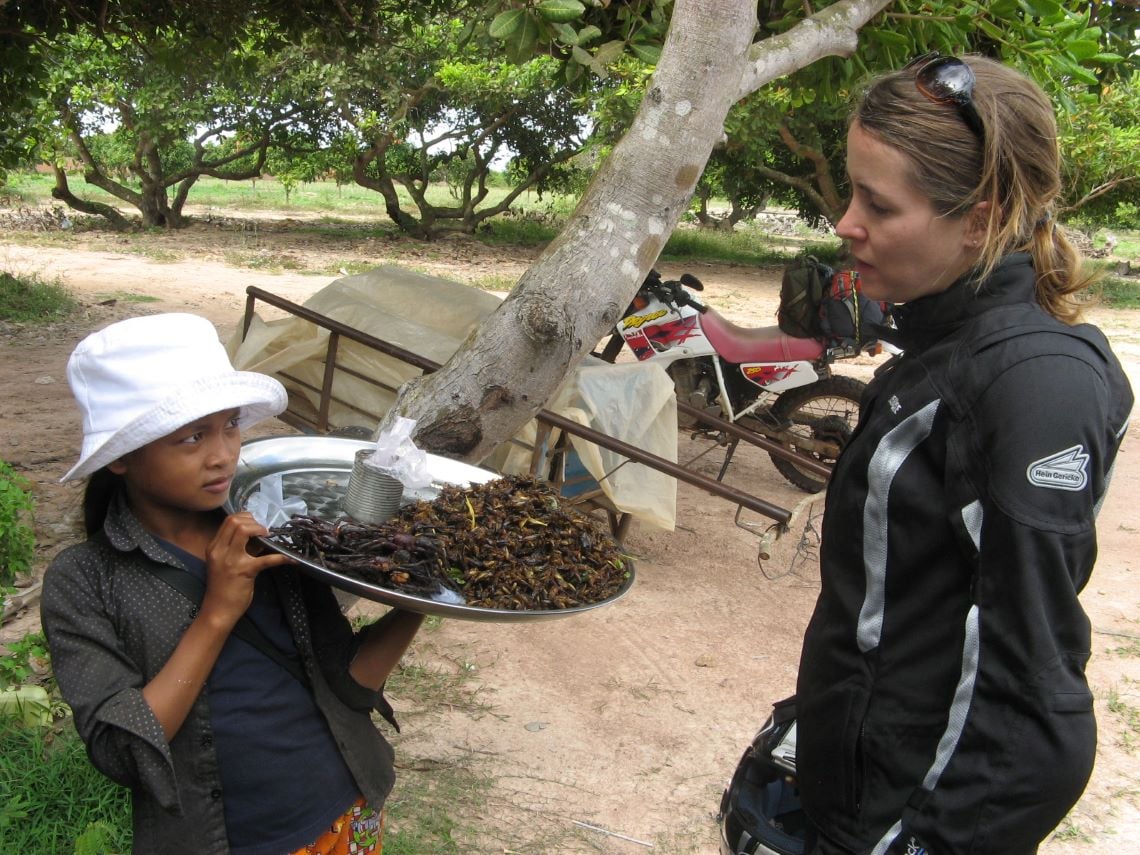
Which reminds me, when riding, you’ll find there’s always someone more eccentric than you. Take the German couple we met in Kampong Cham indulging in a really leisurely three-week tour on a mototuktuk. They’d done the rounds of the taxi ranks in Phnom Penh, found one who would travel the country, and had simply done a deal. This brought them protection from the sun and rain, an unsurpassed view of the country and, when required, an interpreter. They had laid planks across the seats, rigged up a mosquito net and even slept in their tuktuk, all for $20 (£12) a day plus fuel. Ingenious! They weren’t able to explore the jungle trails and back roads, though, and I wouldn’t have missed those for the world.
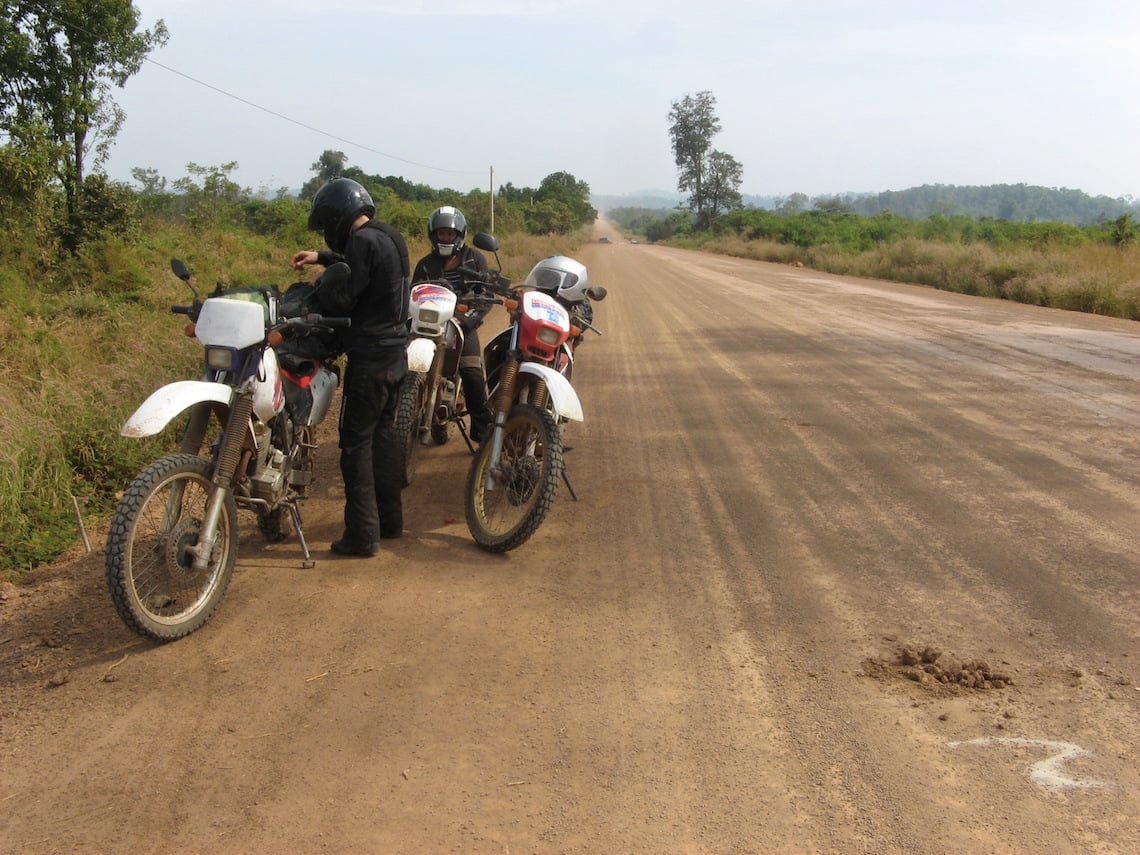
Anna Steele
The week-long ride felt like a month, every hour was action-packed with challenges, laughs, and plenty of mud, sweat and fear thrown in – especially for a learner rider! We were given a bustling highway out of Phnom Penh, gravel dirt roads through rubber plantations, tar sealed village roads along the Mekong River, and muddy, swampy tracks near Snoul on the Vietnam border, which we discovered while taking a ‘short cut’.
The most memorable section of our trip though has to be riding the sandy and rutted trails through the jungle from Kaoh Nhek to Lumphat in Eastern Cambodia. The route on Google maps was unclear; the paper map we had didn’t show a track (so the map readers assure me) and we couldn’t connect with any guides to take us through the jungle.
Having convinced ourselves we’d be pioneers and go it alone, we pulled up to the dusty, back-of-beyond crossroads in Kaoh Nhek and felt like a bunch of Milky Bar Kids as a group of locals starred at us, the barang.
Over a coconut drink we were assured that Chet, a non-English-speaking, moped-riding guide would be essential for our jungle expedition. On reflection, I don’t know what we would have done without him. My bike seemed to have a penchant for lying down and a dislike for sand – and ruts for that matter. I’m pretty sure the hour spent slow riding in the local industrial estate didn’t quite prepare me for the terrain I was to endure on the eight-hour ride through jungle, dried-up river beds, steep ruts, swamps and sand. I soon became an expert green laner, if I say so myself. I learnt to drop the bike to the right, so only snapped a back brake lever rather than my clutch lever, which was given a good workout.
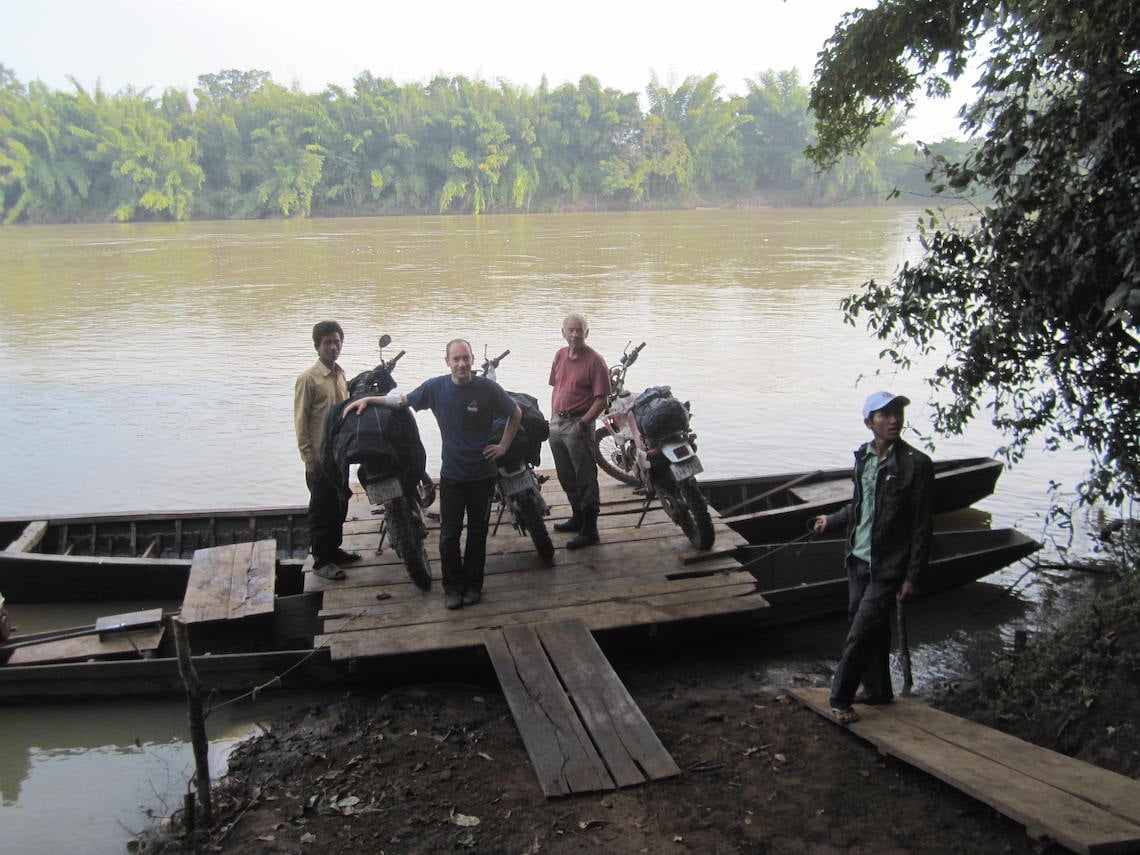
As darkness fell on us and acute fatigue set in we realised the scale of the challenge we’d set ourselves. Every time we stopped to pick up a dropped bike Chet would draw a line in the sand and show us the miniscule progress we had made along the route. We also realised Chet was in fact a real life guardian angel we so nearly left behind.
There’s no rhyme or reason to the endlessly criss-crossed maze of jungle tracks that were once used by the Kymer Rouge. After what seemed like an eternity and digging deep into our energy reserves we pulled in to the local boatman’s family home – our sanctuary for the night. There were pats on backs all round for the successful end to a gruelling, mother of all rides. Everyone had pushed themselves to the limit.
We met the inquisitive family we were to impose on for the night, ate some rice and played a game of travel Connect-4 with them, then settled down to a night under the stars (through a kindly donated mozzie net). As morning arrived we set sail over the river for Ban Lung with our trusty pack horses as they had affectionately become known and waved goodbye to our guardian angel. I’m sure he was relieved to see the back of the naive pioneers who had probably not been the first riders to bite off more than they could chew on that trail.
How would I describe that mini adventure? Absolute nuts, like nothing I had ever endured before, but would thoroughly recommend it! It’s funny how the biggest challenges and achievements you endure can become the best memories you will take with you for the rest of your life.
The bikes
In Cambodia, you can have a Honda or a Honda. We rode Honda 250s. All three were ex-Japanese imports from the late 1990s, coming in to the country on the cheap after a pampered life in Tokyo. We had two trusty XL250s and a XR250 – ever the enduro rider’s favourite. The XLs have a lower seat height and shorter suspension travel making them more manoeuvrable off-road. The bikes excelled, easily more capable than their riders; the XLs were 25 percent more fuel efficient than the XR!
We hired our bikes from Lucky Moto at 413 Monivong Boulevard in Phnom Penh (and you can call ahead if you wish and book at 010 998 099). This is one of a number of local hire shops and with more than 80 bikes available at a daily rate of $12 (£7.50). They offered a friendly service and fantastic value.
Pay up front for the hire; pay when you get back for any repairs. If there’s anything broken on the bike – and you’ve not fixed it – it will be charged. The contract with Lucky Moto included a fixed list of charges (for example, bent handlebars $20, loss of number plate $50 and so on), against which they held your passport. The shop provided a chain and lock for each bike and advised us to use them. They had a charge for stolen bikes, too. Remember to take your bike back clean. Its good manners, and gives the impression that it didn’t have such a hard time after all. There are bike cleaning stations just about everywhere, with the bike lifted on to small hydraulic platforms and an army of cleaners available with their pressure hoses, brushes and soap, so no excuses.
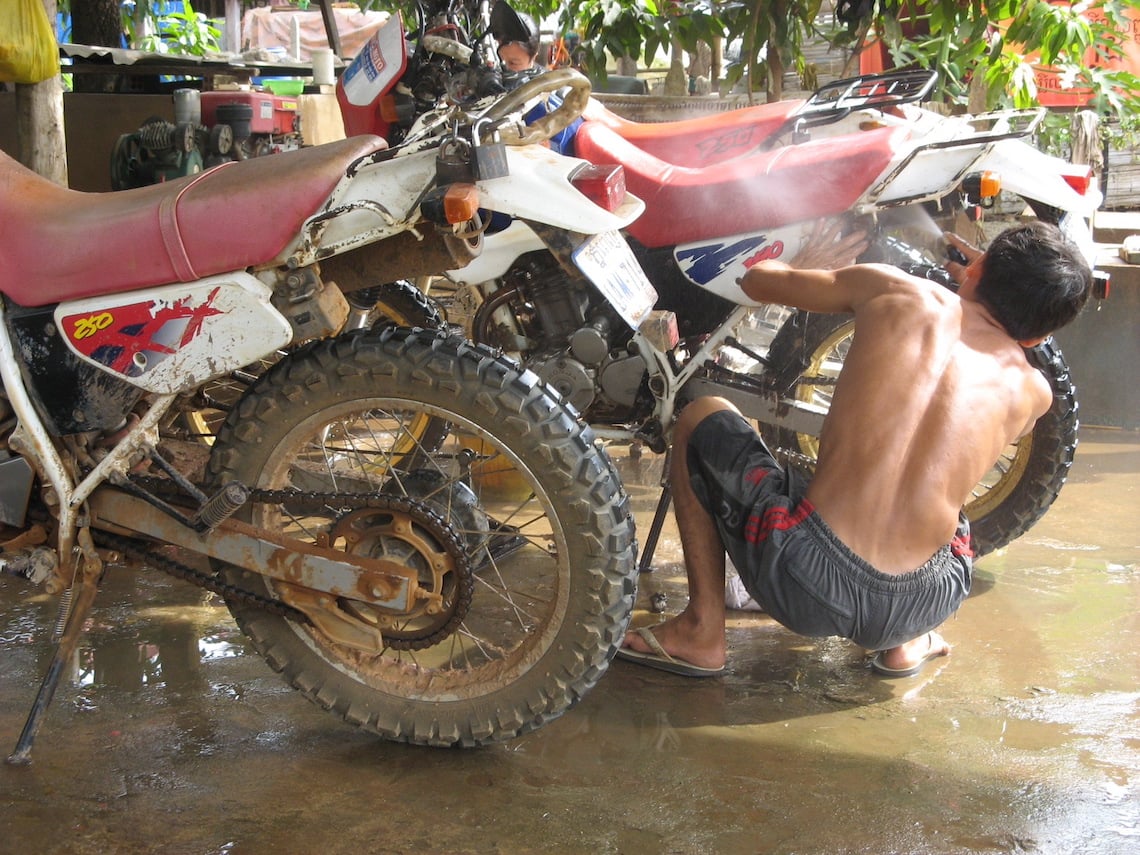
How much?
Costs in Cambodia, like most places, are what you make them. Petrol, food, accommodation and novelty were easily covered by a daily budget of $20 (£12.50) per person, half that if you take the austerity package. Expect to pay more in Phnom Penh. Cambodia uses US dollars everywhere, and the local currency Riels (of which there are about 4,000 to one dollar). Always have a handful of Riels available for tipping people.
Camping in Cambodia
ABR Mike Stevens, retail director of Cotswolds Outdoors, has a BMW R1150 GS; here are his essential gear tips
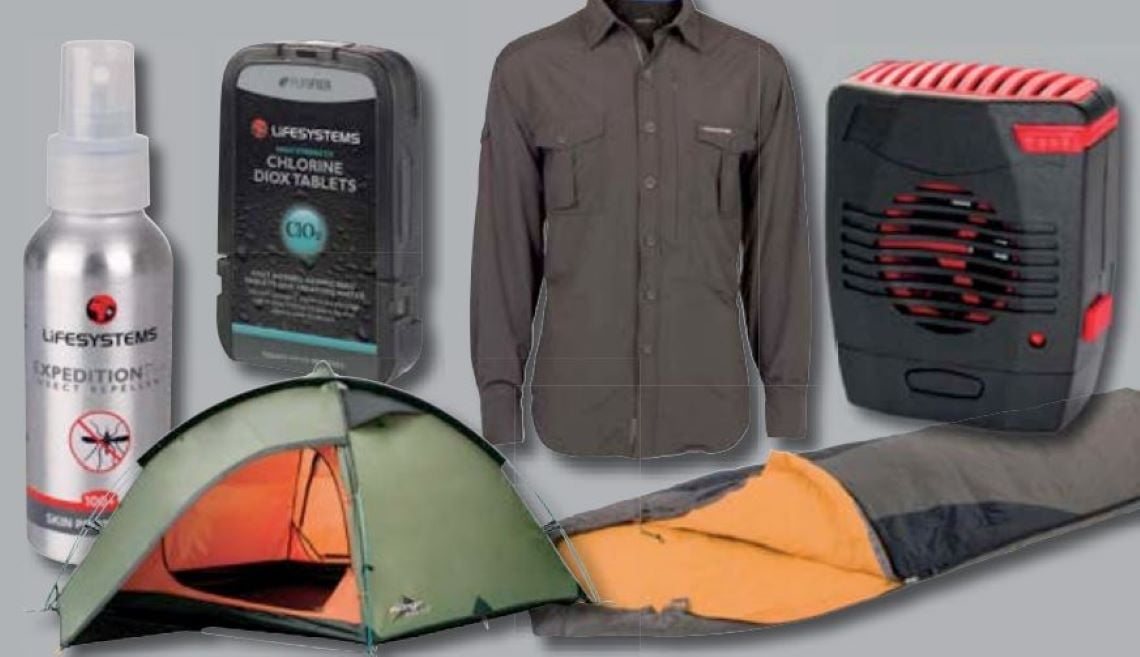
While undoubtedly rewarding and full of interesting people, travelling in Cambodia presents several challenges. This is a place of extremes, from monsoon to very dry conditions. It’s beautiful but limited road network can be both exciting and tiring. Healthcare facilities are basic and the risk of Malaria should not be underestimated. Any kit you take has to be robust, reliable and proven.
Tent: Vango Halo 300, £170 It’s big enough for all your kit, has two entrances and is really well vented
Sleeping bag: Lifeventure Down light 660, £80 A super down bag, comes in its own waterproof stuff sack and has an anti-bacterial, anti-mosquito and bed bug treatment. All this and it only weighs 660g
Stove: Primus Omnifuel, £145 Easy to maintain, robust and it just works!
Clothing: Craghoppers Nosilife shirt, £52 Treated with Nosilife insect repellent and antibacterial treatment to reduce insect bites and combat odour and infection, this shirt’s made from Solardry UPF 40+ fabric and looks smart, too
Essential: Lifesystems Expedition SoloNet, £30 Lightweight, robust and packable. Designed to hang from a single point and fit over a single mattress; ideal for nights in hostels and homestays
First aid: Lifesystems Endurance 12-Hour insect repellent, £9 Brand-new from Lifesystems, this repellent is formulated to allow the DEET to evaporate at a much slower rate, providing protection for up to 12 hours so you can remain focus on the road ahead
Lifesystems Chlorine Dioxide tablets, £11.50 This little pack will safely disinfect 30 litres of water. It kills Bacteria, viruses and cysts including Giardia and Cryptosporidium. Just don’t forget the neutralising tablets (£5.85) to remove the taste!
Luxury Item: Gorilla Pod SLR, £45 Designed to support SLR cameras and compact video cameras, this ingenious lightweight tripod will let you take pictures on the most uneven surfaces
Photos: Anna, Peter & Kristian Steele

